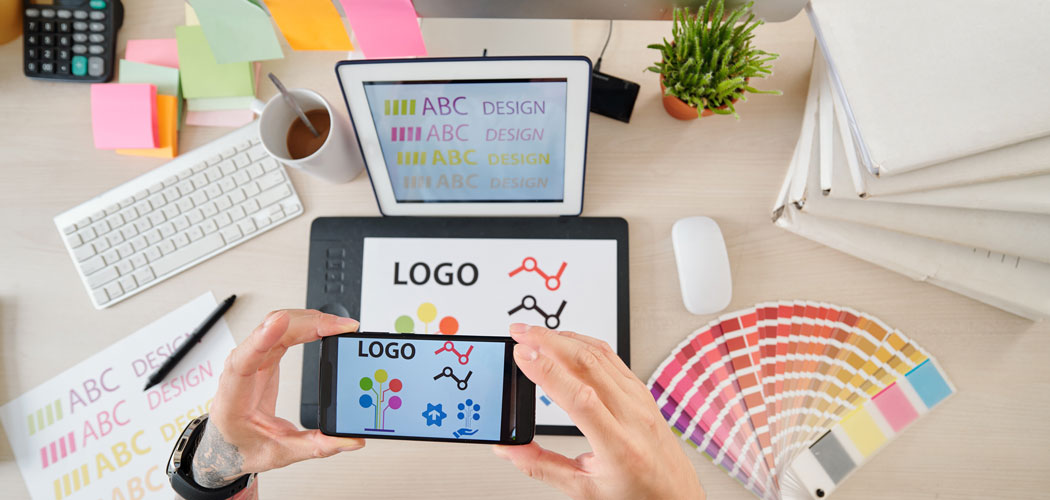
Designing a logo is not as simple as picking a font and slapping it on some text. It’s an art that involves careful consideration of colors, shapes, and fonts. Also, it’s crucial to understand logos’ role in branding and how they deliver vital messages.
To ensure your logo stands out and makes an impact, consider working with a creative services team to help bring your vision to life. Their expertise will help you create an iconic logo communicating your brand’s personality.
6 Key Elements to Consider When Designing a Logo for Branding
Here are 6 key elements to consider when designing a logo for branding:
1. Identify Your Identity
Knowing who you are and what you stand for is the starting point of any successful business. Defining your brand or business identity can be challenging, but it’s essential to developing a strong sense of self. You need to know who you are and what your company stands for to communicate those values to your target market effectively.
An effective logo will reflect those values and help build trust between your organization and its customers. It should express what makes you unique and create an emotional response that evokes how customers feel when interacting with your business.
2. Keep Your Target Audience in Mind
You can only design a logo for branding if you clearly understand your target audience. Before you start sketching out ideas, take some time to learn about the people who will see and use your brand’s identity. Who are they? How old are they? What’s their gender? What are their preferences and values? These are just some questions that will help inform the direction of your design process.
The more specific the data about a company’s intended market, the better; This is crucial from an aesthetic and an economic perspective. By establishing new products or services, businesses can personalize messaging to the consumer persona without alienating potential customers who could buy if given decent marketing materials!
3. Discover What Others Are Doing
Once you’ve identified your target audience and market, it’s time to start looking at other logos.
The best way to do this is by going through each of these steps:
- Look at other logos in your industry. Even if you don’t plan on competing with them directly, they can inspire what works well and what doesn’t work well in the minds of consumers.
- Look at the logos of competitors who offer similar products or services as yours (or even ones that aren’t necessarily similar). Examine your competitors’ logos. This will illustrate how the competition compares to its rivals and whether your brand identity efforts could cover any gaps in its branding strategy!
- Finally, look at creative services teams that have done design work for your competitors or even industry experts. Some businesses need help identifying a consistent identity to incorporate into their logos. This is where the support from the creative services team comes in. They can provide insight into how others in your industry have branded themselves and what successful logo designs look like. This will help you better understand the creative styles that are working for other businesses and give you ideas on what might work best for you.
4. Determine What Makes Your Brand Unique
When designing a logo for branding, it’s essential to understand that the logo is not the only element of your brand identity. Your business name, tagline, and colors can be used with your logo to create a cohesive look.
To create a cohesive look across all of these different elements, it helps if you identify them as part of your overall brand strategy. This can help everyone understand what they’re working with and how their efforts contribute to a compelling visual identity.
5. Consider Color Theory in Logo Design
Color theory is a complex science that has been studied for centuries. Color theory can help you to create powerful logos by using specific colors together and avoiding others. Still, it’s also important to remember that logo design has no hard-and-fast rules!
For example, if you want your logo to appear on an old wooden signpost at an amusement park or carnival, include some reds and yellows in the design. If your brand is more modern and sleek, try some blues instead. Or, If you run a business specializing in organic produce, you may want to use green as one of the primary colors in your logo. Green is associated with growth and health so it would be an appropriate choice for this type of business. And, If you specialize in high-end luxury products, black might be more suitable for your brand identity. Black is often associated with elegance, sophistication, and luxury brands.
The point here is that color has meaning: don’t just grab any random assortment of hues from the paint box. Think about how color fits into your business’s mission or who its customers are before deciding which shades will work best in your logo design.
6. The Right Font for the Job
Choosing the right fonts for your logo is a crucial step in designing an effective logo for your brand. Your font will set the tone for how others view your company.
Some guidelines for selecting appropriate fonts are as follows.
- Familiarity: It is one of the most critical factors in choosing a font. You want your audience to recognize the font instantly, so it needs to be commonly used and recognized.
- Simplicity: If you’re going for an easy-to-read font, you’ll want something clean-looking and straightforward that doesn’t have too many curves or flourishes. Something like Times New Roman or Arial would work well here.
- Font Size: The font size used in your logo will affect how viewers perceive it; larger fonts may seem more important or professional than smaller ones, for example.
Conclusion:
Overall, designing a logo for branding is an intricate and systematic process. It’s vital to consider the elements of shape, color, typography, and messaging that contribute to a logo’s visual representation of your brand. A successful logo should capture the essence of your company’s personality and create an emotional connection with its audience. With careful thought and strategic design, your logo can become a potent visual symbol that resonates with your brand identity and contributes to its success.
Creating a logo is challenging, but it’s worth the effort. Take time to research and brainstorm ideas. Use tools like online logo makers or professional designers to help create the perfect logo for your company. With a unique and recognizable logo, your business will stand out above the rest.
Read More: 5 Questions to Ask Yourself Before You Choose Your Final Logo Design





